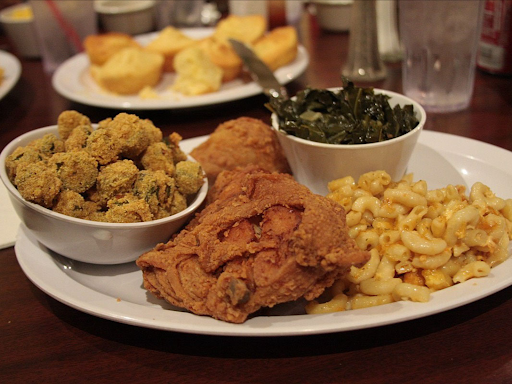The Healing Power And History Of The Sunday Dinner
John 6:35 - “Jesus said to them, ‘I am the bread of life; whoever comes to me shall not hunger, and whoever believes in me shall never thirst.’” Here’s how the church played a huge role in our people’s freedom through food.

A pot of greens simmers on the stove. Mac and cheese grows golden in the oven. A slotted spoon drips with cornbread batter, and the smell of buttermilk fried chicken fills the air.
This meal is a beautiful spread that goes beyond sustenance alone.
Sunday Dinner filled our people’s spirits, especially during enslavement, when Saturday night was the time for distributing provisions to the enslaved, and they created large meals on Sunday evenings.
John 6:35 says, “Jesus said to them, “I am the bread of life; whoever comes to me shall not hunger, and whoever believes in me shall never thirst.” As community cornerstones, the church became our restaurants too.
After Sunday service, folks filled fellowship halls where long dining tables held the most delicious feasts.
Food writer Joyce White explains, “Being people of color, we always liked to eat and break bread and show the bounty of our labor. The churches were our restaurants. We didn’t have to worry about segregation or not feeling welcome.”
It was a sacred space, and although the tradition has shifted from generation to generation, it is divine anytime we can gather in community and break bread with loved ones.
Sunday dinner is a sacred gathering space where we can unwind, express gratitude for God and our people, and honor a centuries-long tradition worth holding on to.
We have a quick favor to ask...
We hope you're enjoying PushBlack Spirit! Spreading the truth about Black spiritual practices and history is just as important to you as it is to us.
And as a small non-profit, we need your support to keep spreading these important stories.
With as little as $5 a month, you will support our tech and writing costs, so we can reach even more people like you. It only takes a minue, so will you please donate now?
